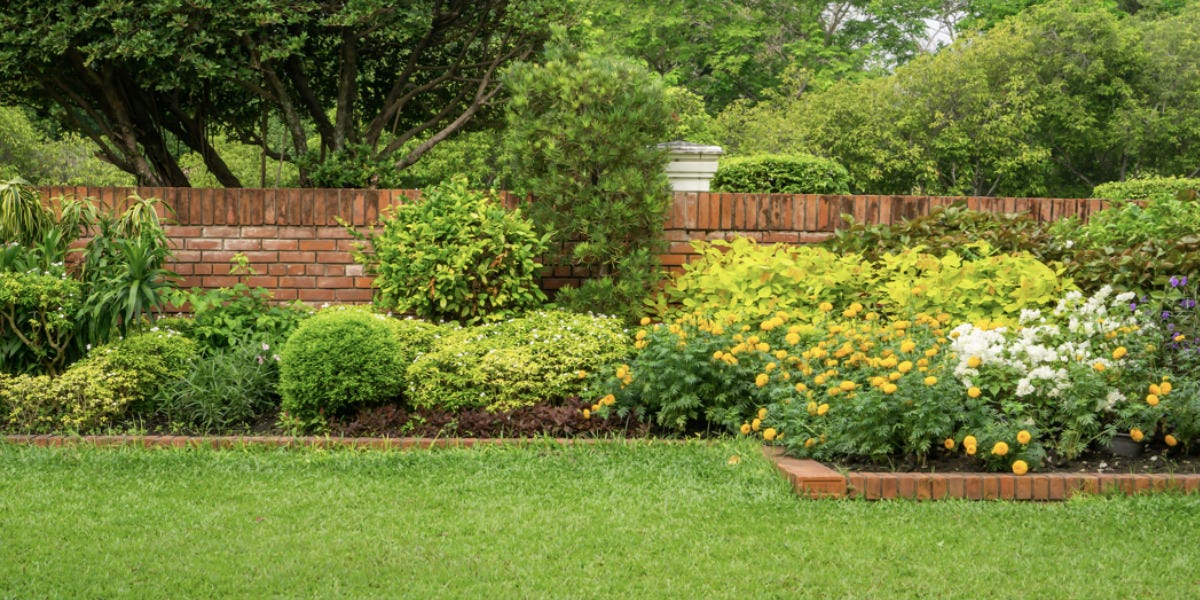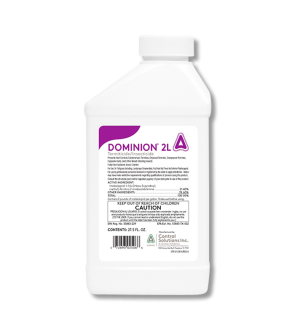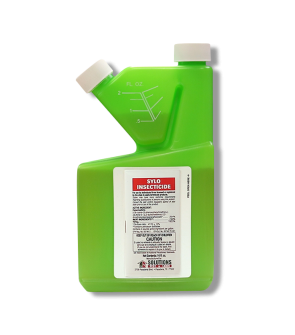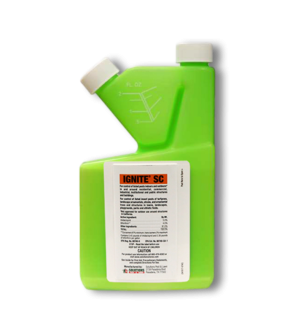Insects in Trees/Bushes
Most Effective Products
Common Insects in Trees and Bushes
When the weather begins to warm up, you may see a plethora of pests in your trees and bushes. Although some insects rarely pose a threat to your trees and bushes, others may cause problems for these healthy foliage.
Some of the destructive and common pests that can cause serious damages to your tree and bush are aphids, bark beetles, caterpillars, scales, and spider mites. If these pests are left untreated, an infestation can ruin your landscape, bringing down the value and appeal of your home.
To protect your trees and bushes from these pests follow along with the steps and tips in our DIY guide. If you are seeing a pest not listed here then contact our customer service team by phone, email, or in-person at one of our store locations for professional recommendations.
Aphids
Aphids are small pests that eat away at the sap in the leaves and stems of trees and bushes. After feeding, they can leave behind honeydew which in return can attract other pests like ants.
Large infestations of aphids can stunt the growth of foliage and cause leaves to misshapen, curl, or turn yellow.
Identification
Aphids are small pear-shaped pests that measure 6/100th of an inch long. In color they vary from yellowish-green, black, red, or pink.
At the end of their abdomen they have tailpipes known as cornicles.
Inspection

Aphids can be found on the underside of leaves, stems, and branches of various trees and bushes.
Treatment
Step 1: Prune Away Infected Foliage
First thing to do against aphids is to start pruning away any dead, discolored, or decaying parts of the tree and bush.
This will assist in controlling aphids while also giving the tree and bush a better chance to spend its energy on parts of the plant that are not suffering.
Less energy spent on damaged plant parts the better change it has to repair and survive pest infestations.
Step 2: Hose Off Plants

Using a garden hose to water plants with a gentle stream of water will help reduce and deter aphids activities.
Focus on watering the underside of leaves since this is where aphids are most active.
Water no more than an inch of irrigation once per week, preferably in the early morning. Watering earlier in the day will help give the soil enough time to absorb water.
Step 3: Apply Systemic Insecticides
 The most effective way to kill aphids on trees and brush is to use a systemic insecticide.
The most effective way to kill aphids on trees and brush is to use a systemic insecticide.
Dominion 2L Insecticide is a systemic insecticide and termiticide formulated with imidacloprid to kill and repel a broad-spectrum of pests, including aphids.
Determine how much Dominion 2L Insecticide to use by measuring the square footage of the treatment area. To do this, measure the length and width of the treatment area in feet then multiply them together (length X width = square footage).
Apply 1.5 fl. oz. of Dominion 2L Insecticide per 100 gallons of water for trees and shrubs. To easily treat a larger area and tall tree canopy heights we recommend using a hose-end sprayer.
Spray the top and bottom of leaves until wet, but not to the point of runoff.
When dried, any pests that feed or travel on treated ornamentals will perish for up to 90 days after Dominion 2L Insecticide application.
Bark Beetles
Bark beetles are serious pests that damage both the exterior and interior of trees and bushes.
The continuous damage of bark beetles can result in discoloration, stunt of growth and spread of diseases leading to complete death of trees or bushes.
Identification
 Bark beetles are fairly small measuring up to ⅛ of an inch long. Typically they are dark red, black, or brown in color and have cylindrical-shaped bodies that are hard.
Bark beetles are fairly small measuring up to ⅛ of an inch long. Typically they are dark red, black, or brown in color and have cylindrical-shaped bodies that are hard.
Inspection
 Bark beetles feed under the bark of tree and woody ornamental stems, trunks, and branches.
Bark beetles feed under the bark of tree and woody ornamental stems, trunks, and branches.
Treatment
Step 1: Spray Sylo Insecticide
 To stop bark beetles from killing your trees and shrubs you can use a chemical application of Sylo Insecticide.
To stop bark beetles from killing your trees and shrubs you can use a chemical application of Sylo Insecticide.
Keep in mind that once adult bark beetles penetrate the wood and lay eggs chemical treatments would not control the infestation.
Sylo Insecticide is a cypermethrin insecticide concentrate that will prevent and control pests such as bark beetles from trees and woody ornamentals.
To control bark beetles, apply a 0.1 emulsion of Sylo Insecticide. To gain this, mix 1 oz. of Sylo Insecticide with 1 gallon of water.
We recommend you make this application with a handheld pump sprayer.
Spray the bark of the tree and ornamental where bark beetles are expected to invade. Depending on the species, bark beetles can invade the lower, middle, and upper tree trunk as well as the tree branches. If you wish to also protect these areas then you may have to use a hose-end sprayer.
Spray the bark thoroughly, but not to the point of runoff.
Tent Caterpillars
Tent caterpillars are the caterpillars of various types of moths and butterflies. These pests are notorious for the amount of damage they do to trees and bushes in a short amount of time.
Other than defoliation, tent caterpillars are also known to create large webs or tents on foliage rendering it unaesthetically pleasing.
Identification
 Tent caterpillars are hairy caterpillars that grow between 2 to 2.5 inches long. They are dark-colored with a pattern of lines running down their bodies.
Tent caterpillars are hairy caterpillars that grow between 2 to 2.5 inches long. They are dark-colored with a pattern of lines running down their bodies.
Depending on the species the markings could be white colored with either a solid line, dash mark, key-hole shapes, or none at all.
Inspection

Treatment
Step 1: Prune Foliage

To avoid over pruning foliage, you can scrape away webbing, eggs, and the pest itself with a scraping tool.
Dispose of pruned foliage immediately to avoid tent caterpillars spreading to other nearby foliage.
Step 2: Apply Supreme IT

Supreme IT is a broad-spectrum insecticide concentrate that is labeled to control over 70 different types of pests, including tent caterpillars. After it has dried, this product will protect treated foliage for up to 90 days and eliminate any tent caterpillars that contact these sites.
To kill and repel tent caterpillars on ornamentals, use 5.4 to 10.8 fl. oz. of Supreme IT per 100 gallons of water.
We recommend making applications with a hose-end sprayer to easily treat tree canopy heights and a larger treatment area in one application.
Spray the tops and bottoms of foliage to the point of wet, but not runoff.
Do not apply Supreme IT to any plants growth for consumption and wait until treated plants are dry before any type of irrigation can occur.
Keep children and pets out of treated areas until the spray has dried.
Scales
Scales are often the silent killer of trees and bushes since they feed on the interior of a foliage bark.
It is not until the damage and discoloration of foliage is quite extensive before it appears on a tree or bush bark.
Identification

Depending on the species, scales range in color from brown, black, or gray.
Inspection

Treatment
Step 1: Prune Infected Branches
Pruning away infested stems, leaves, and branches of trees and bushes can help to eliminate scale infestations.
Thinning out overgrown or dense foliage can deter scales and eliminate those hiding in plants.
However, to avoid over pruning you can scrape off the pests you see on bark with a scraping tool.
Step 2: Apply Systemic Insecticide

Determine how much Dominion 2L Insecticide to use by measuring the size of the tree or shrub you intend to treat.
To find the size of the shrub or tree, you will measure the distance around the tree trunk or the height of the shrub. Measure distance in inches around the tree trunk at chest height. If there are multiple tree trunks, add their measurements together.
Apply 0.1 to 0.4 fl. oz. of Dominion 2L Insecticide per inch of trunk diameter to eliminate scales from trees. Mix with no less than 10 gallons of water per 1,000 sq. ft.
To get rid of scales in shrubs, apply 0.1 to 0.2 fl. oz. of product per foot of shrub height. Make applications as a soil drench around the root area of the shrub with no less than 10 gallons of water per 1,000 sq. ft.
Either of these applications will need to be done with a hose end sprayer.
To make soil drench applications, uniformly spray around the base of trees and shrubs until wet.
Spider Mites
Spider mites are destructive pests that can take down established trees and bushes with little effort.
These small arachnid pests will quickly breed and mature in a short amount of time. Not to mention, spider mites can easily become resistant to pesticide treatments with each new generation.
Identification

They come in a variety of colors ofwhite, red, brown, orange, yellow, or green.
They also have 8 legs, one round oval-shaped body, and no antenna. When newly hatched they will have 6 legs, but later on develop 8 legs total.
Inspection

Treatment
Step 1: Water Foliage

Take care to avoid watering which can be done by spraying an inch of water once per week in the early morning.
Water the top and bottom of foliage leaves, stems, and branches since spider mites gather or lay their eggs in these sites.
Step 2: Spray Residual Insecticide

To kill spider mites on ornamentals, use 10.8 to 21.7 fl. oz. of Supreme IT per 100 gallons of water. Apply this product with a hose-end sprayer to reach tree canopies and cover a large treatment area.
Spray the top and bottom of ornamental leaves until wet, but not to the point of run-off. For most effective control of spider mite species such as the twospotted spider mites, apply during spring and mid-summer.
It would be best to alternate between insecticides and miticides each year to avoid spider mites becoming resistant to products being repeatedly used.
Key Takeaways
Common Pests on Trees and Bushes
- Common bugs you will see on trees and bushes are aphids, tent caterpillars, scales, spider mites, and bark beetles.
What Kills Bugs on Trees
- Depending on the pest, we recommend using a systemic insecticide like Dominion 2L Insecticide or a residual insecticide like Supreme IT.
How Do I Get Rid of Bugs in Bushes
- To remove bugs from bushes, an application of 1 inch of irrigation once per week will help promote shrub growth and deter pest activity. Then an application with Supreme IT will eliminate and prevent certain pests from these plants.


















































































































































































































































































































































































































































































































































